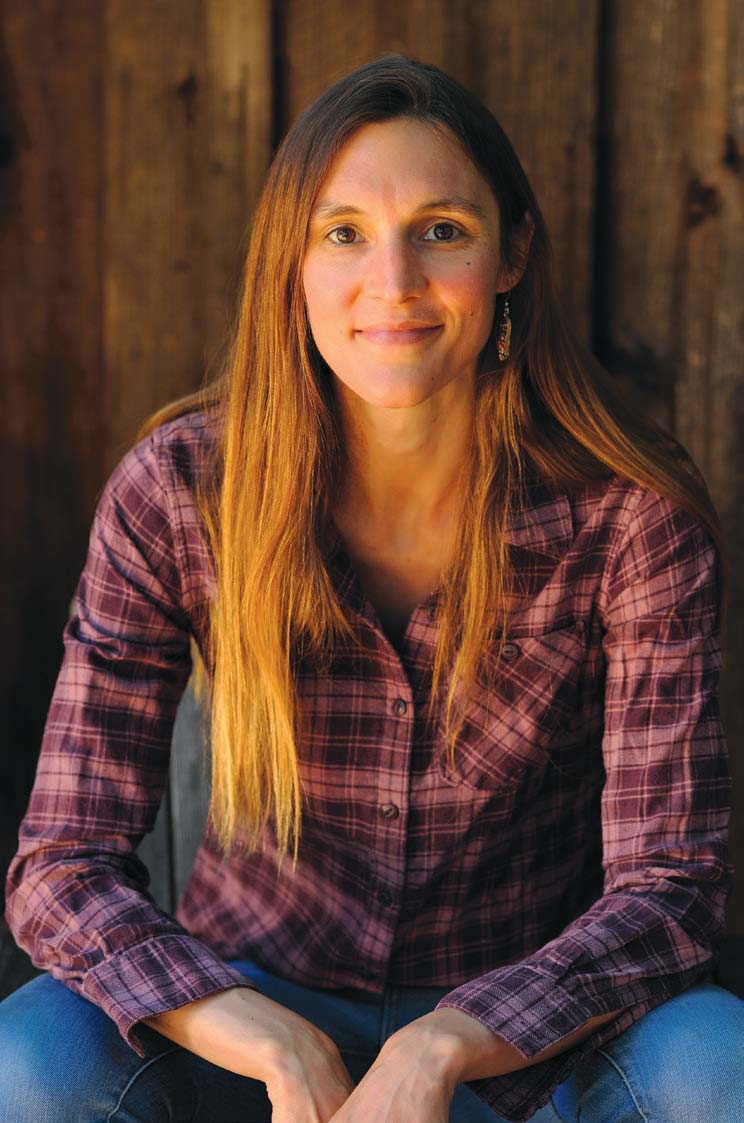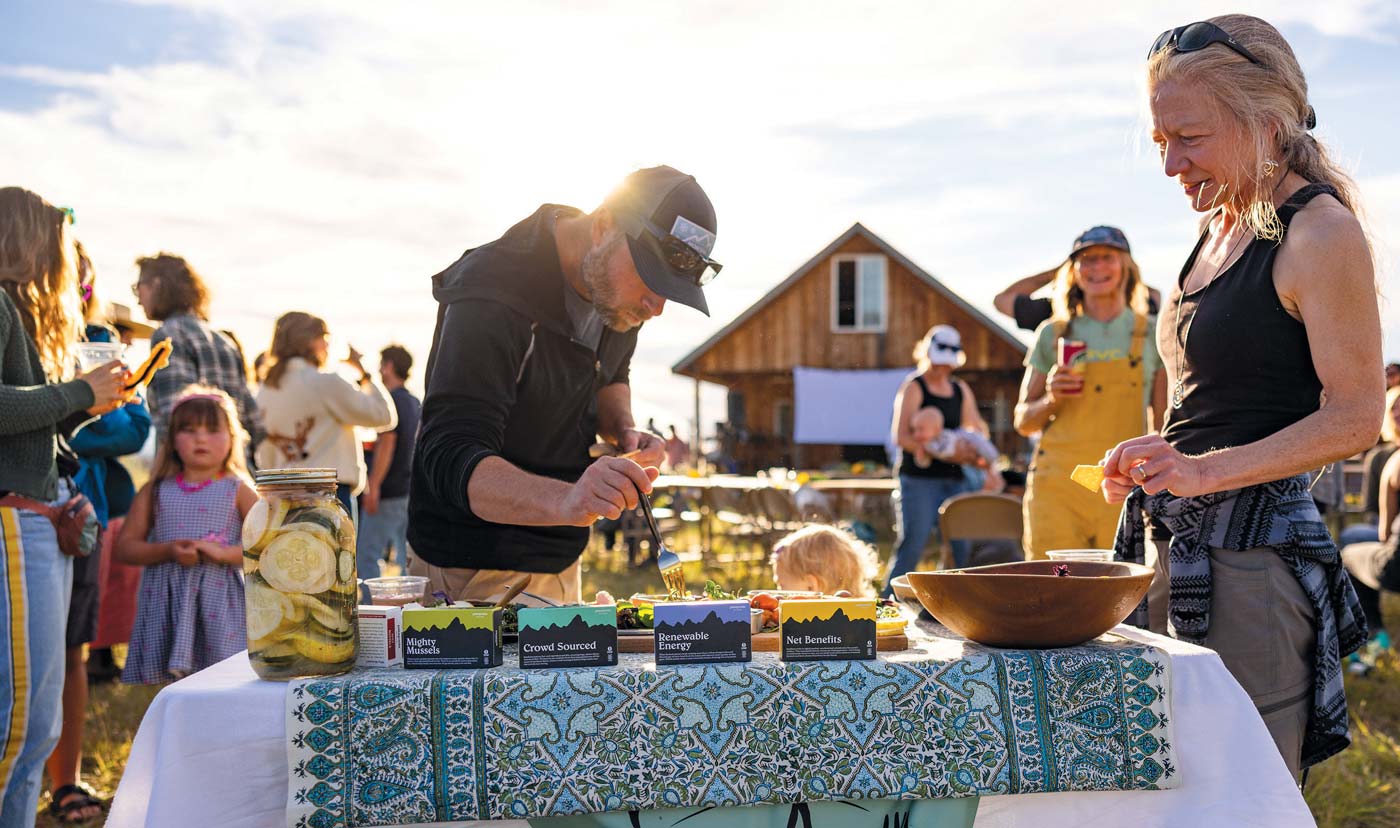Annual AERO Expo Explores Nutrient Density and Food Justice
Every year, the Alternative Energy Resources Organization (AERO) brings together producers, students, researchers, and many others interested in sustainable agriculture, alternative energy, and strong local food systems to share ideas, learn new skills, and strategize for the development of a more sustainable Montana for all. This year’s AERO Expo, held Sept. 30–Oct. 2, 2022, at the Arrowpeak Lodge in the Highwood Mountains near Great Falls, explored the theme of “Cultivating Resiliency” through the lens of stewardship agriculture, and offered many opportunities for collective and individual growth.
Headlining the conference were two keynote speakers who also participated in breakout sessions throughout the event: Dan Kittredge, organic farmer and founder of the Bionutrient Food Association, led a two-day workshop and keynote session delving into the biological principles of nutrient-dense food and its sustainable production; Liz Carlisle, assistant professor at University of California, Santa Barbara, and author of Lentil Underground: Renegade Farmers and the Future of Food in America and Grain by Grain: A Quest to Revive Ancient Wheat, Rural Jobs, and Healthy Food, discussed her latest book, Healing Grounds: Climate, Justice, and the Deep Roots of Regenerative Farming, and the critical role that racial justice plays in healing our land, our climate, and our communities.
“Going from working all the time and not having any money to working part-time and having plenty of money made me think that maybe there’s something here,” said Kittredge on how growing in harmony with nature and mimicking biological strategies increased his farm’s profitability and his lifestyle.
The simple wisdoms woven through both his workshop and his keynote speech were striking. At the foundation of his work, Kittredge believes access to nutritious food for everyone is possible and that it’s really not so complicated to make that access a reality. The pivot point is our willingness to understand and embrace the principles of biological systems, and to see our role as farmers and ranchers as caretakers and stewards of those systems—especially the soil microbial ecosystem.
The pivot point is our willingness to understand and embrace the principles of biological systems, and to see our role as farmers and ranchers as caretakers and stewards of those systems— especially the soil microbial ecosystem.
Throughout the weekend, Kittredge discussed answers to the questions driving him: “How can we get the best produce to the most people?” and “What is the best produce, anyway?” His response is both grassroots and technology-based. He is highly involved in community outreach, educating through workshops and presentations. During the Expo pre-conference workshop, he and the participants unpacked in detail the five needs of all biological systems—air, water, food, minerals, and life—and how these apply to healthy microbial ecosystems, the foundation of healthy, nutrient-dense food. The workshop followed a comprehensive approach, from seed to harvest, applying the five principles to crop production management and logistics, including exploring the growth steps that render healthy plants indigestible to pathogens and how to maximize that opportunity in any growing environment. Participants came away with a deeper understanding of how to analyze environmental factors impacting plant health—and therefore harvest quality—and with that knowledge, they learned how to make intelligent management decisions.
Technologically, Kittredge works with a global research team developing an open-source, consumer-priced, noninvasive, hand-held bionutrient light meter that can read the nutrient level of food, crops, and soil. The goal is to give consumers the ability to make purchasing decisions based on the nutritional value of food. “Few things change a system faster than consumer demand, and our goal is to transform the food supply to one that puts nutrient density first,” he said. A first-generation meter calibrated for 10 crops is currently being used and tested in several dozen countries around the world.
“How can we get the best produce to the most people?” Liz Carlisle encourages us that “We’re all food citizens!”

Liz Carlisle’s current work explores climate, justice, and the deep historical roots of what we now call regenerative farming. Her latest book explores the adaptive wisdoms of Native American, African American, Mesoamerican, and Asian American food-growing traditions that are alive and thriving in communities of color across the United States. By embracing their cultural ties to the land, these communities—many of them marginalized—are stitching ecosystems back together and repairing the carbon cycle, while also feeding themselves with nourishing food, and reweaving their cultural fabric as a community. Healing Grounds offers a stark rethinking of all our assumptions and a way forward for a truly sustainable agriculture, climate, and humanity: a holistic approach that values diversity at all levels—in people, plants, and the life under our feet.
What Carlisle has found in her research is that reciprocal relationships at all levels, rather than extractive practices, are necessary for achieving these goals. Offering one part of the answer to “How can we get the best produce to the most people?” Carlisle encourages us that “We’re all food citizens!” We each have the ability to nurture reciprocal relationships with the land and within our communities. If you do not have access to land, maybe you know a farmer who does. The rise of gardening during the pandemic is a ready example. So many people easily shared the garden vegetables they grew. These reciprocal interactions open up the possibility of deeper, enduring, and more meaningful relationships everywhere. Being an active food citizen, whether by sharing your produce or supporting Indigenous producers, opens the possibility for better food and better stewardship of the land.
- You can watch Liz Carlisle and Dan Kittredge’s keynotes on AERO’s YouTube channel at youtube.com/user/aeromt1974.




